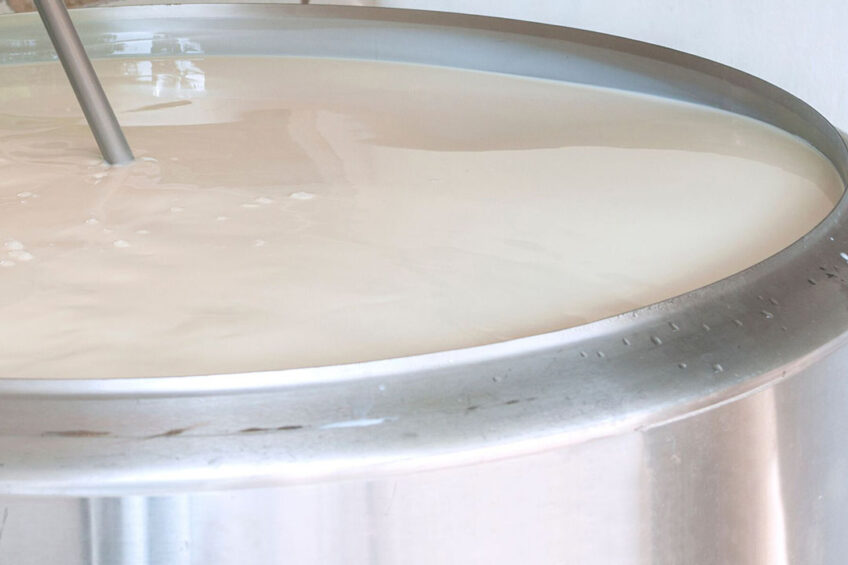Economic gains by addressing milk quality to reduce waste

Looking at research work, most interventions that target food waste usually revolve around logistics and operations management, but in this report, researchers highlight a unique solution to address this issue, specifically for fluid milk – they target the intrinsic quality of fluid milk by evaluating interventions that will extend the product’s shelf-life.
According to the Food and Agriculture Organization of the United Nations (FAO), a third of the food produced is wasted globally. In the context of dairy, for example, a product discarded during cleaning or line changes at a milk processor is food loss, whereas a product discarded when consumers dispose of milk after its code date is food waste.
Specifically, in the US, dairy products have been estimated in the past to be among the top 3 food groups representing the largest share of the total volume of food waste, with fluid milk estimated to be responsible for approximately 65% of dairy food waste by weight, while the value of fluid milk waste in the US was estimated to be US$6.4 billion per year.
Alongside the financial concerns associated with fluid milk waste, there are environmental implications associated with fluid milk waste. Globally, fluid milk production, processing, and transport have been estimated to be responsible for 2.4 kg of CO2 equivalent per kg of milk and represent 2.7% of global anthropogenic greenhouse gas emissions (FAO, 2010).
Basis for economic and environmental analysis
We used data from a previous fluid milk spoilage simulation model, collected price and product information from retail stores, conducted an expert elicitation, and used hedonic price regressions to determine the private and social gains to the dairy processing plant when implementing 5 different interventions to extend shelf life. The 5 strategies are as follows:
1. Seek and destroy
This represents a strategy where a specific strain of spoilage bacteria that is habitually found in a specific place or niche in a facility is responsible for a substantial proportion of fluid milk spoilage issues. Addressing this issue involves finding and removing the niche and would not be an ongoing intervention. Researchers assumed that once this niche has been removed, the facility will no longer have a problem with fluid milk spoilage due to this bacterial strain.
2. Improved preventative maintenance (PM) procedures
Include improved standard operating procedures to replace equipment parts before they wear out and contribute to bacterial contamination of finished products. This is an ongoing intervention that reduces the overall occurrence of finished product contamination with spoilage organisms.
3. Increased periodic equipment cleaning (PEC)
In addition to Clean-In-Place sanitation regimens, PEC, which is labour-intensive and involves equipment disassembly, is essential to control post-pasteurisation contamination. Due to the manual, labour-intensive nature of PEC, plants will use different PEC frequencies. As increased PEC frequency is predicted to reduce post-pasteurisation contamination with spoilage organisms, the researchers of the current study evaluated increasing PEC frequency as the third intervention.
4. Temperature sensors
The addition of temperature sensors to half-gallon packaging can also be an effective way to extend the shelf-life of fluid milk. This intervention would be implemented by placing a temperature sensor on each milk carton. The sensor would indicate when fluid milk exceeds a target temperature range (or a given time-temperature combination threshold) and could also be used with predictive models to allow for package-specific shelf life information (i.e., smart label). These approaches can reduce unnecessary discarding of product that is not spoiled.
5. Antimicrobial coating to floor drains
Because contamination can occur through aerosolised bacteria, the fifth intervention evaluated the use of antimicrobial coating on floor drains, which is expected to reduce fluid milk contamination (e.g., at the packaging stage). This contamination is a result of the aerosolisation of bacteria found in processing plant environments (e.g., due to cleaning with high-pressure hoses) and an antimicrobial coating on the floor drains is expected to reduce bacterial numbers on floors and hence reduce the number of aerosolised bacteria. This intervention was included as an example of interventions that use infrastructure and facility improvements to extend fluid milk shelf-life.
Shelf-life extension estimation
The 5 interventions evaluated here were predicted to extend fluid shelf-life by between 1 and 7 days. The 2 interventions that were predicted to allow for the largest shelf-life extension were intervention (2), improved PM, and intervention (3), increased PEC. The other 3 interventions (1, 4, and 5) were estimated to only allow for 1-2 days of shelf-life extension.
The researchers highlighted: “Unlike other perishable products, consumers cannot use appearance as an extrinsic cue to evaluate the intrinsic quality of fluid milk, the ability to apply the interventions that extend shelf life for 1 to 7 days may offer substantial benefits.”
Price premiums for fluid milk with extended shelf-life
The results of this study show that the value of each additional day of shelf-life is approximately US$0.03 and indicate that increasing periodic equipment cleaning is the most cost-effective strategy for processing plants to achieve fluid milk shelf-life improvements, both from a firm’s economic standpoint and from an environmental standpoint. This value might be used as a premium to encourage the extension of the shelf-life of milk fluid.
Other studies have shown that consumers are willing to pay for a longer shelf-life if the product is safe, and they understand the technology; thus, consumers are receptive to paying more for a product with a longer shelf-life.
Cost-benefit analysis for different interventions
Interventions (2), improving PM procedures, and (3), increased PEC, which both provided for substantial shelf-life extensions (2-7 days), showed the largest effect on net gain. Interventions (1), implementing seek and destroy, and (5), application of antimicrobial coating to floor drains, had lower estimated net private gain, while intervention (4), the addition of a temperature sensor to half-gallon packaging, was estimated to be the least cost-effective measure.
Researchers concluded that given that consumers value shelf-life in fluid milk products, it seems likely that there would be an opportunity to pass at least some of the costs for implementing these interventions on to consumers through retail pricing in stores, even if the full US$0.03 premium may not be possible. They added that while milk is currently differentiated based on milk fat percentage, price, and conventional versus organic, their results provide an opportunity for firms to use the shelf life attribute to compete in vertical product differentiation.
Conclusion
“Our data suggest that the value of each additional day of shelf-life is approximately US$0.03 and indicates that increasing periodic equipment cleaning is the most cost-effective strategy for processing plants to achieve fluid milk shelf life improvements, both from a firm’s economic standpoint and from an environmental standpoint.”
They added: “The approaches reported here will be valuable to help individual firms generate customised facility and firm-specific assessments that identify the most appropriate strategies for extending the shelf-life of different dairy products.”
It is also important to recognise that implementation costs will vary depending on the processing plant size and a plant’s specific situation and that initial feasibility assessments may require different cost estimates than those used in this study.
Source: Journal of Dairy Science (2023)
Join 13,000+ subscribers
Subscribe to our newsletter to stay updated about all the need-to-know content in the dairy sector, two times a week.










